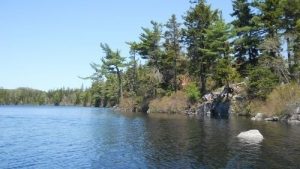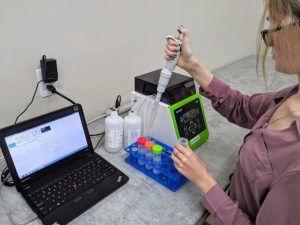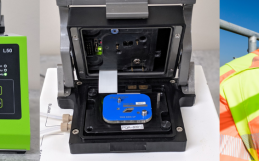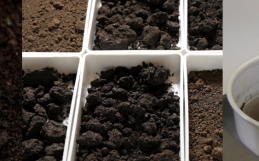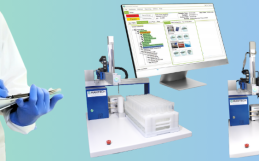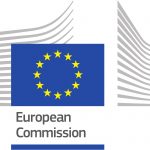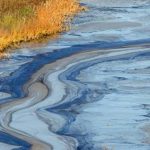Dalhousie’s Centre for Water Resources Studies (CWRS) is home to an exceptional team of students, researchers, and professors constantly pushing the barriers of knowledge in fields related to water, our environment, and how humans factor into the equation. As part of their research, they also investigate new methods and instruments for monitoring water quality, and through this investigation were turned on to the potential for peCOD to be a valuable tool and asset for quantification of natural organic matter.
You can download the pdf version of this application brief by the CWRS team using this link.
A Comparison of peCOD vs Specific UV Absorbance for Monitoring NOM Reactivity
Prepared by Lindsay Anderson and Talija Menegotto
Background
Natural organic matter (NOM) present in surface drinking water sources has an impact on water treatment and can lead to health effects if not removed sufficiently. NOM can be monitored using a few different tools, however, new methods to understand and manage NOM in drinking water systems are constantly needed.
The peCOD method was originally released as wastewater COD method (a measure of the oxidizable organic matter). This can also be referred to as the reactivity of the organics, and therefore the peCOD measures reactivity of the NOM. Specific UV absorbance, or SUVA (the ratio of UV254 to DOC) is a parameter that is commonly used in water treatment to indicate the reactivity of NOM (aromaticity and hydrophilicity), and is often used to inform disinfection by-product formation. SUVA provides valuable information from an operational perspective; however, it requires two instruments: a UV254 analyzer and a DOC analyzer. Furthermore, this measurement can take hours/days, hence it limits the use of SUVA for timely operational monitoring.
SUVA values <2 L/mg.m indicate hydrophilic NOM with low UV absorbance, low chlorine demand and low THM formation potential. SUVA values between 2 – 4 L/mg.m indicate a mixture of hydrophobic and hydrophilic NOM with higher chlorine demand and THM formation. Lastly, SUVA >4 L/mg.m indicates highly hydrophobic NOM with high THM formation potential (Edzwald and Tobiason, 1999).
Pockwock Lake, Halifax, Nova Scotia, the Source Water for the city of Halifax, and one of the lakes monitored with the peCOD method for SUVA comparisons.
Results
Per data from surface water treatment plants in Atlantic Canada and the UK, peCOD and SUVA data followed a linear relationship illustrating that peCOD effectively adds insight into reactivity of NOM, thereby DBP formation potential. For raw water, SUVA results were >4 L/mg.m corresponding to peCOD values >10 mg/L (up to 20 mg/L). For finished water, SUVA of <2 L/mg.m corresponded to peCOD <10 mg/L. This indicates that hydrophobic material is more dominant in raw water NOM and the finished water is predominantly hydrophilic in nature.
Conclusions
The data supports the use of the peCOD method to provide effective insight into the reactivity of NOM and subsequent DBP formation. Furthermore, peCOD is an empirical measurement of reactivity meaning it is independent of matrix, whereas SUVA is an interpretation and dependent on single matrix correlations.
PeCOD is a “2 for 1 SUVA”, one instrument and one sample to measure NOM reactivity in minutes
An operator analyzing water samples with the L50 PeCOD Analyzer. A simple method which can be analyzed from any location, and PPE not required due to the green and safe method.
References
Edzwald, J.K. and Tobiason, J.E. (1999). Enhanced coagulation: US requirements and a broader view. Wat. Sci. Tech., 40(9): 63–70.

